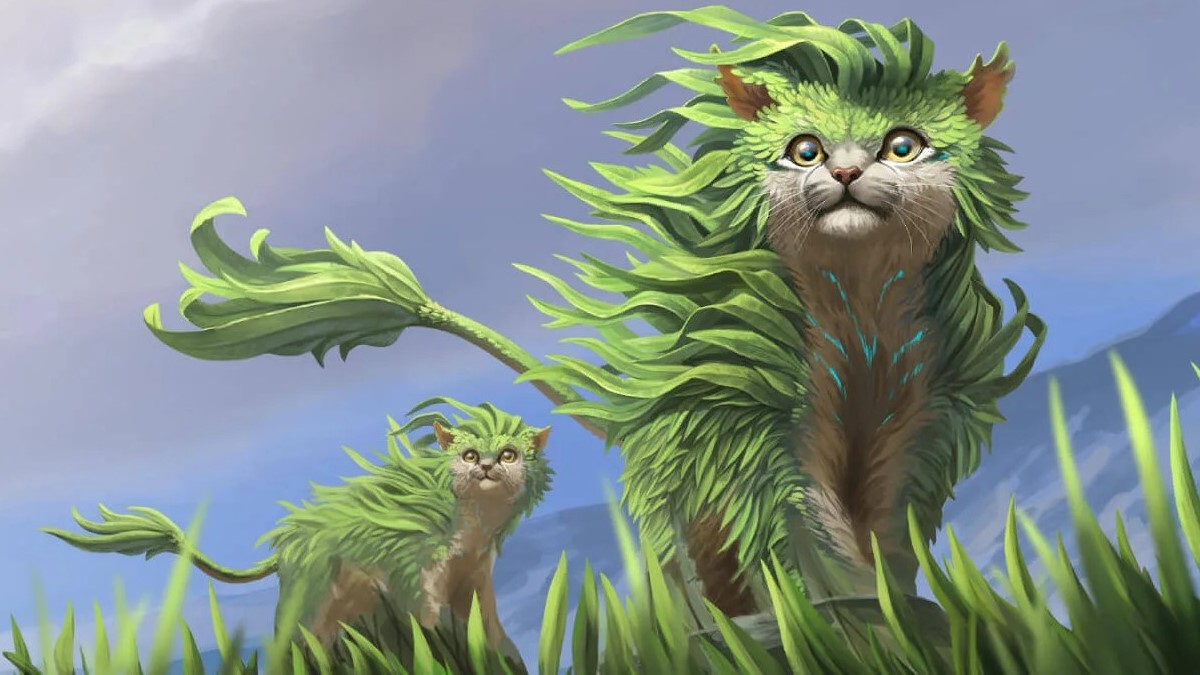
Playing tabletop RPGs like Dungeons & Dragons online rather than in-person is more common than ever—particularly since the pandemic lockdowns—with websites like D&D Beyond, Roll20, and Owlbear Rodeo coming into their own. These "virtual tabletops" or VTTs offer ways to do virtual dice rolls, move icons around a battle map, and view character sheets in a shared online space.
Fablecraft's goal is to take that into a new realm, combining a VTT with elements of a videogame RPG for an even more accessible, polished, and visually exciting experience, using its own custom world and rules. And… it's kind of enchanting.
I got the chance to try out an early build of the game with co-creator David Hohusen acting as Games Master. Like a normal tabletop campaign, Fablecraft requires a GM to run it, and up to six players—ideally three or four—to take the roles of the party's adventurers. Webcam and mic support ensures you don't need any other programs open—everything's contained within the app, which launches directly out of Steam.
As soon as the dice hit the digital table, I'm convinced. The production values are what sells Fablecraft—from its slick interface, to its gorgeous art, to, yes, its smooth and exciting dice roll animations, it just immediately puts you in the right headspace for a fantasy adventure.
Making a character for my first adventure is super fast and easy. First I pick a name, with help from a brilliantly mischievous name generator that spits out gems like "Wandoo Catbell" and "Aspen Rumstack". Then I decide on a home culture, a portrait, a class, two skills, and a combat style, and I'm done in just a few minutes. It's a far cry from the lengthy process of making a D&D character, even with D&D Beyond's help.
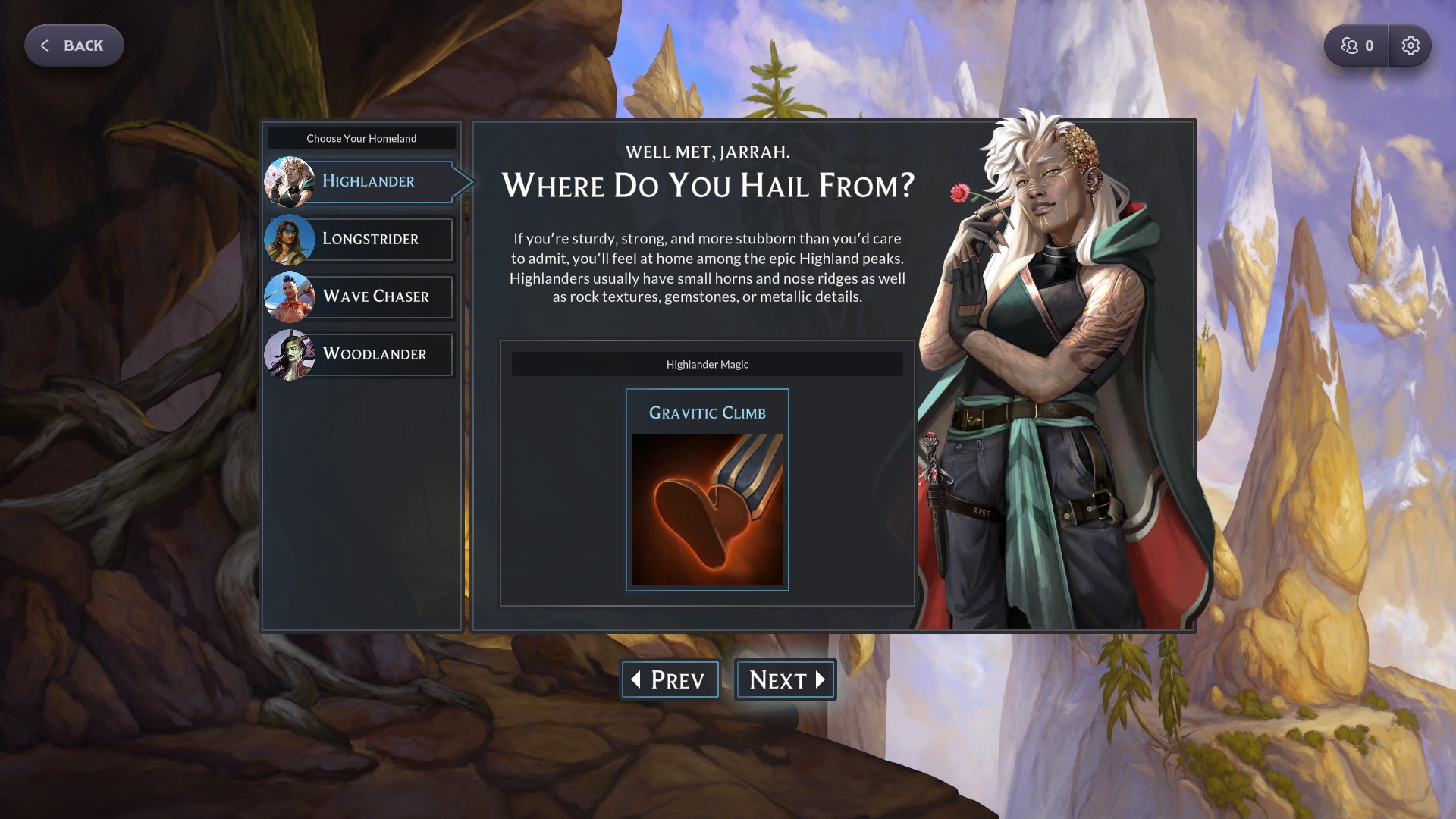
You can be a warrior who manipulates the power of gravity and lives in harmony with nature, or a steadfast lawbringer who combines fire and ice to bring down criminals.
My adventurer—the devious Nutmeg Cudd—is a Highlander, a kind of stubborn mountain-dweller infused with the power of earth. Fablecraft has its own unique setting, where elemental energy suffuses the world and every character is some flavour of magic-wielder. Combining different classes (which grant out-of-combat abilities) with different combat styles (essentially your spells) immediately conjures up memorable and strange archetypes. You can be a warrior who manipulates the power of gravity and lives in harmony with nature, or a steadfast lawbringer who combines fire and ice to bring down criminals, or, in the case of Nutmeg, a radiant healer who's also a jumpy thief.
Fablecraft's world deals in a lot of familiar fantasy tropes, but it's more of a step away from D&D's setting than I expected. There are no dwarves or elves, every adventurer is some manner of wizard, and the scenery is surreal and almost dream-like. Its vibrant art instantly gives it its own personality—there's a light, colourful, and slightly camp quality to it that may turn off those who like darker fantasy, but I suspect will hit a sweet spot with fans of popular actual plays like Critical Role and Dimension 20.
Thief inspector

After a brief introduction to our adventure's locale—the rolling green hills of the Long Meadow, where nomadic peoples revere the stars—Nutmeg is thrown into a very recognisable set-up. Bandits have stolen something precious, and they're holed up in a nearby dungeon, waiting for a good-hearted sort to go and rough them up. Pretty cliché it has to be said, but it's an inviting first step into this world. Whatever they may look like and wherever they may live, I know where I am with bandits and a dungeon.
The scene is set with a selection of gorgeous backgrounds, with icons popping up to show which characters are present. On the GM side, it takes just a couple of button presses to set up any given encounter, and the whole pre-written adventure is laid out in a highly digestible format that allows sections to be ticked off as the players complete them. As Nutmeg sneaks around, interrogates a sentry, and ponders over dungeon puzzles, the action is handled with simple, automated skill checks that keep the action flowing without any need to consult a rulebook.
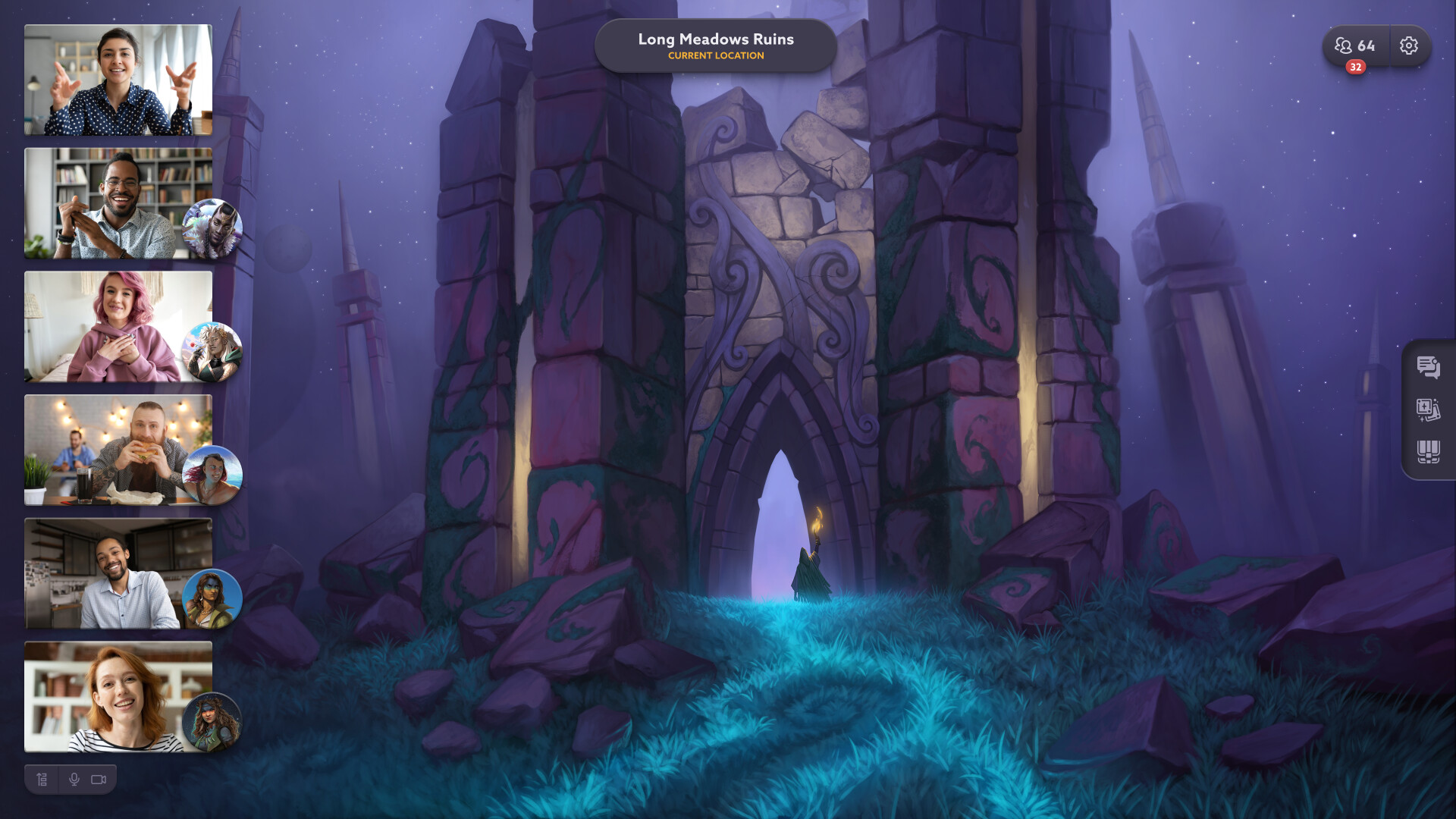
It's about as stripped back as fantasy adventure gets in these out-of-combat sections, the goal being to make Fablecraft an accessible introduction to tabletop RPGs.
These streamlined mechanics will be too light a touch for some—essentially you just click on the relevant skill's button to roll a number of dice equal to its value against a target number of successes. Roll enough successes and you win, roll extras and it's an even better outcome. It's about as stripped back as fantasy adventure gets in these out-of-combat sections, the goal being to make Fablecraft an accessible introduction to tabletop RPGs for both the players and the GM.
I'm a big fan of fast, simple mechanics myself, but I couldn't help but think that with a platform as slick at presenting and automating your abilities as this, it could easily include more detail and options without being overwhelming. Like Usain Bolt taking a gentle stroll round the park, it works but it feels like it's holding back.
Brawl aboard
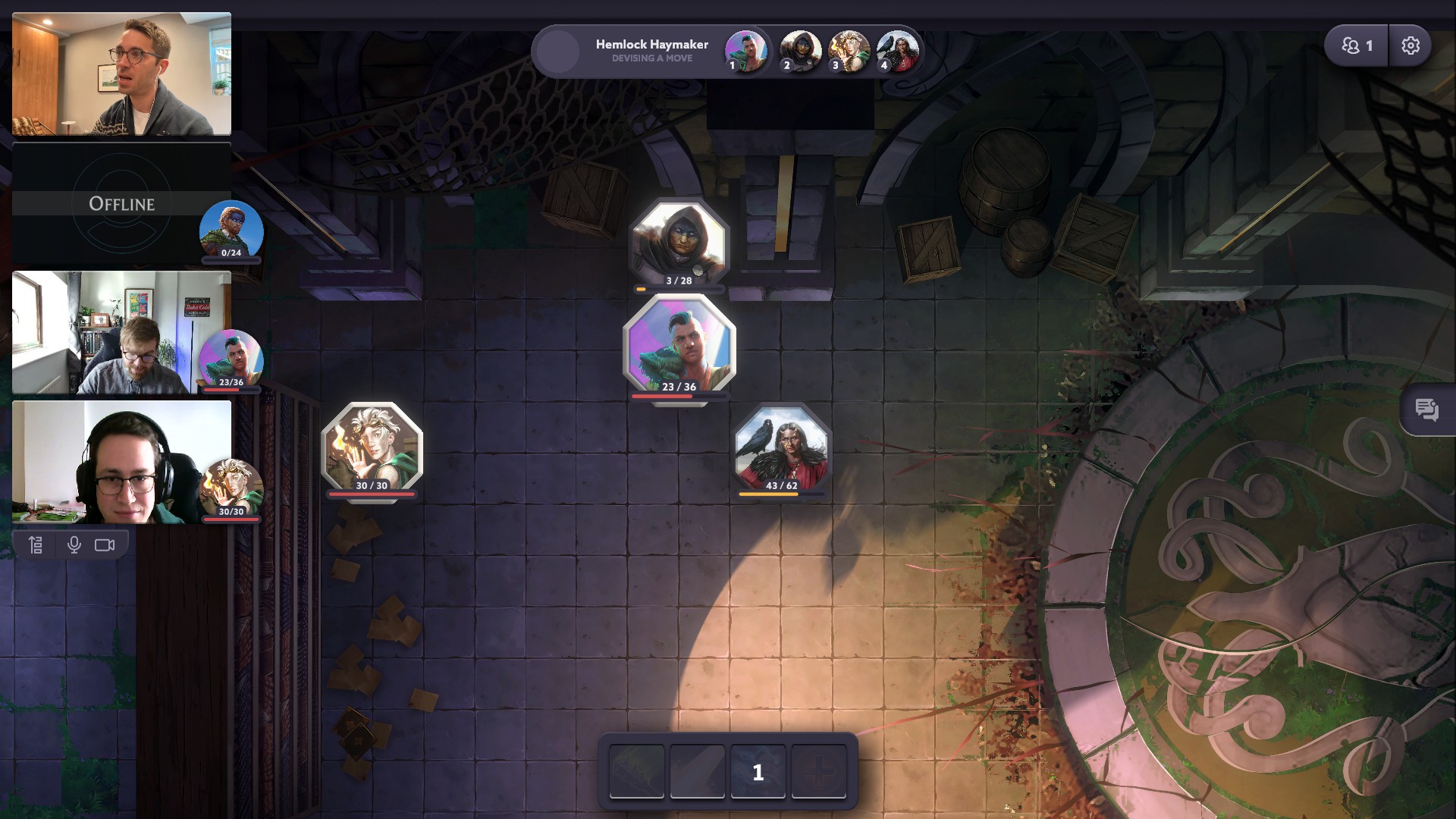
As you move your character around and deploy your spells, it feels as much like a turn-based videogame as it does a tabletop game.
More depth, at least, is found in the combat. As Nutmeg's expedition inevitably devolves into a brawl with the bandit leader, the screen transitions seamlessly to a battle grid with player characters and enemies arrayed as chunky tokens. As you move your character around and deploy your spells, it feels as much like a turn-based videogame as it does a tabletop game. Flashy animations give each spell weight and drama—whether you're leaping into the air to slam down next to a bandit, or shooting out a flare of blinding light—and there's tactical nuance to how you use them.
Much of this climactic battle is spent with me and my adventuring companion—the courageous Hemlock Haymaker, piloted by GamesRadar's Ben Abott—looking for clever ways to apply the areas of effect of our powers and outmanoeuvring our enemies with our debuffs. Lining up my radiant blasts to pass through Hemlock (for a handy heal) and then as many enemies as possible (for some less pleasant damage) is an accessible but engaging tactical puzzle, as is looking for opportunities for Hemlock to disrupt the bandits' movement to prevent them shooting at us from afar.
Importantly, while the combat launches you into its own polished interface, there's no hard divide between fighting and adventuring. Attacks still use those same simple dice mechanics, just translating excess successes into extra damage and healing, and simple controls allow the GM to easily adjust a fight to account for clever plans and unexpected manoeuvres. We start off our fight with the bandits by sneaking into their HQ through a secret passage and pushing a huge bookcase on top of one the guards—that's exactly the kind of hijinks I want to be able to get up to in a TTRPG.
Future shock

You'll be free to craft your own adventures, drawing on the game's library of locations, characters, and enemies or importing your own custom assets.
Despite the simple premise and my relatively brief play time, I leave that first session pumped about the platform and keen to dive back in. There's a ton of potential here. With the pre-written adventures and easy GM interface, I feel like I could log in and be ready to run an adventure in minutes—even making characters from scratch or teaching new people how to play would barely extend that set-up. If I'm hanging out with people on Discord, it could be as easy to jump into as a multiplayer videogamer, and it'll be free-to-play, so there's no barrier to getting your buds involved.
And then there's the larger potential—of what you'll be able to do with it if you do have the time to prep. You'll be free to craft your own adventures, drawing on the game's library of locations, characters, and enemies or importing your own custom assets. The developer's plan is that players will be able to upload their adventures and download ones made by others—an ever-expanding library of user-created content. And the studio even hopes to allow more radical changes in the future, such as different mechanics and settings, and perhaps even partnerships with popular tabletop RPGs that could bring their adventures onto the platform. That's an ambitious goal, but if they can pull it off, it could be a whole new step forward for VTTs.
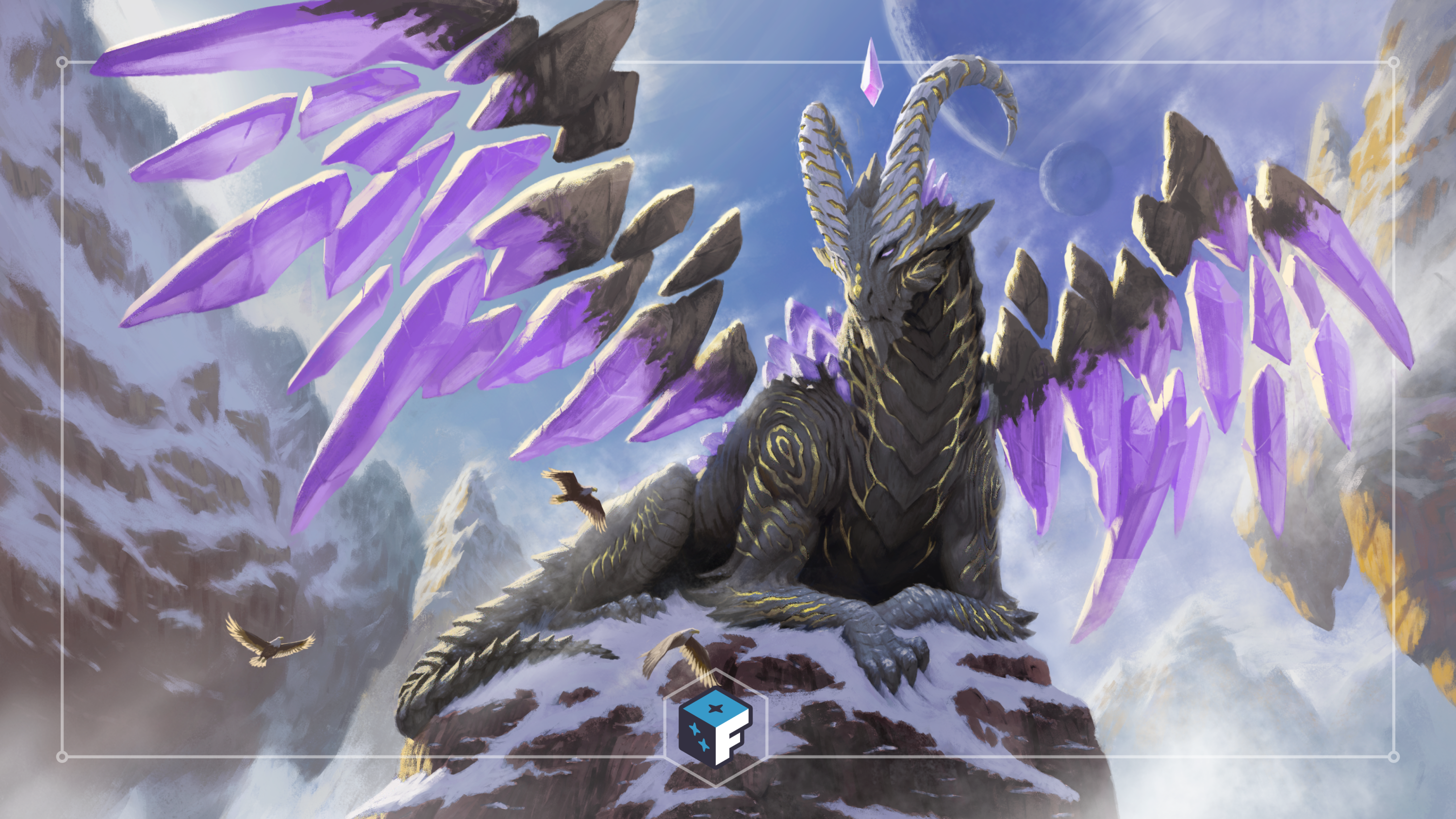
My biggest takeaway after my Fablecraft session is: this is really setting the bar for where Wizards of the Coast needs to reach with its upcoming official VTT for Dungeons & Dragons. With its streamlined approach and unique setting, I don't think Fablecraft will necessarily be what everyone's looking for. But it feels like a real vision of the future for tabletop RPGs—slick, polished platforms for online adventure bringing together the best of physical and digital play.
Fablecraft is currently crowdfunding on Kickstarter. It's already smashed its goal, but if you want to get involved, you can pledge now to gain a place in the upcoming closed beta.







